S.D. Falchetti's Blog
May 23, 2025
Thoughts on Love, Death and Robots Season 4
Season four of Netflix’s sci-fi anthology Love, Death, and Robots dropped May 15, bringing ten new bingable stories to 2025. In previous years, stories needed to have one of the title elements and this was typically supplied with plenty of R-rated mayhem, often with gore and nudity. The series often reminds me of a modernization of 1981’s Heavy Metal, stringing together imaginative sci-fi animations with adult themes.
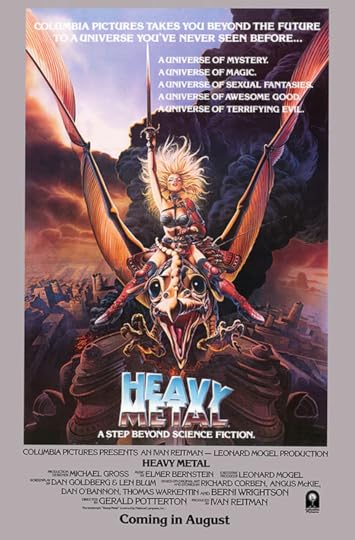
Like most anthologies, there is a mix of good and bad stories, but over time the series has shifted towards more solid offerings. with Season Three serving up a several excellent episodes. Although I hoped Netflix would continue this trajectory, Season Four fell a bit flat and felt a bit rushed, although there were still a few standouts. The episodes:
Can’t StopThe first episode has nothing to do with Love, Death, or Robots, unless you count loving the Red Hot Chili Peppers as love, or perhaps consider marionettes robots. The episode is a CGI animated Red Hot Chili Peppers concert performance, except everyone is a marionette, a la Team America style. Although well-done from a computer animation standpoint, after watching it, my only question was why?
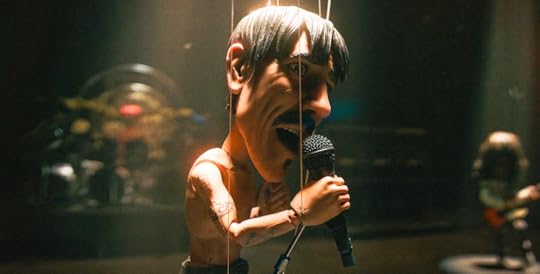 Close Encounters of the Mini Kind
Close Encounters of the Mini KindSeason 3’s Love, Death, and Robots included Night of the Mini Dead, a fun fast-forward zombie outbreak rendered as a tilt-shift diorama. Season 4 brings us the same approach with aliens. After an alien first contact goes disastrously wrong due to humans, well, being humans, an all-out alien invasion and human resistance unfolds at breakneck speed. A proper Love, Death and Robots episode that’s just as fun as its Season 3 predecessor. Recommended.
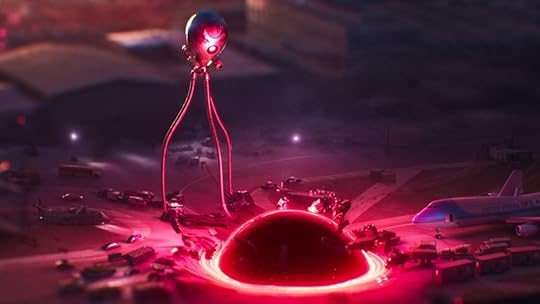
Close Encounter of the Mini Kind, Season 4

Night of the Mini Dead, Season 3
Spider RoseAnother proper Love, Death, and Robots sci-fi episode, this story centers on a solitary female cyborg who mans a trading station, seeking to trade for a weapon to extract retribution upon the group that killed her husband. When an alien trader arrives but refuses to trade weapons, it instead offers her a pet. The pet has a certain Lilo and Stitch quality to it, both melting the woman’s hardened heart but also containing a danger. My favorite parts were her bonding with her pet by doing things like playing zero gee fetch. The story didn’t quite stick the landing, but visually and tonally it fit right in with what I expect from the anthology, which is a good thing.
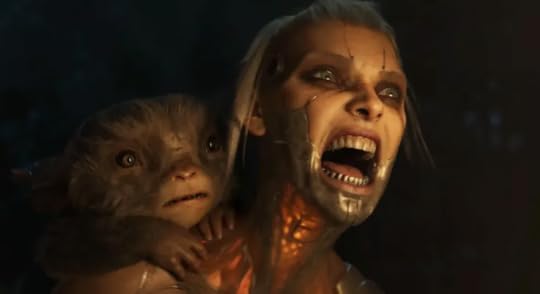 400 Boys
400 Boys400 Boys is all style. I can’t explain the story itself. It’s something like “a bunch of humans with electrical telekinetic powers in a dark apocalyptic future fight giant naked evil babies that wield massive chains”. That’s pretty much it. It looks cool in the way that stylized anime fights have an intense kinetic energy, but I can’t really explain what I was watching. I will say that it’s generated a lot of discussion as to what it represents, with theories ranging to racial inequity, gang violence, or plutocracy. so I give the story credit for inviting the viewer to interpret its meaning.
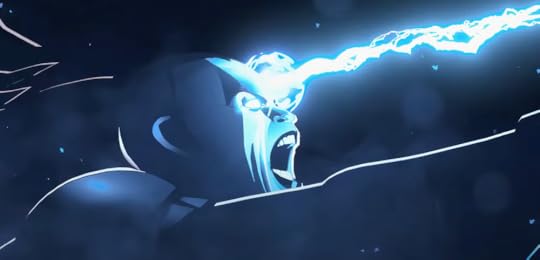
From a stylization standpoint, the art reminds me a bit of Season One’s superb Zima Blue:
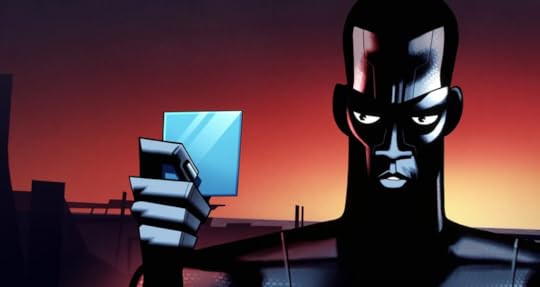 The Other Large Thing
The Other Large Thing“Cats are evil and plotting to take over the world” isn’t quite an original idea. The story, from the perspective of one of the evil cats, adds a twist when its human owners buy a robot to do house chores, and the robot learns the cat’s language. Soon the cat is using all of the robot’s abilities to exact its plans, including connecting to the internet to coordinate with other robots . The animation is well-done, with characters having a cartoonish look that fits the story’s tone well, and overall the episode is a good middle-of-the-road offering for a Love, Death and Robots season.
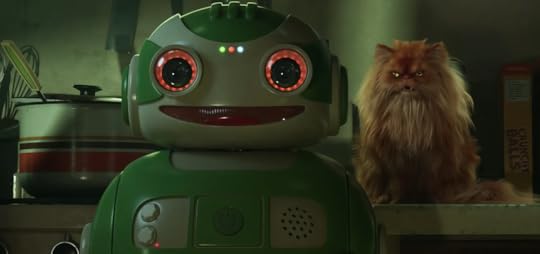 Golgotha
GolgothaGolgotha is the first live-action episode in Love, Death and Robots. It’s interesting that many of the series CGI fairings have become so photorealistic that you find yourself questioning whether people are real or rendered. An example from Season 3’s Jibaro:
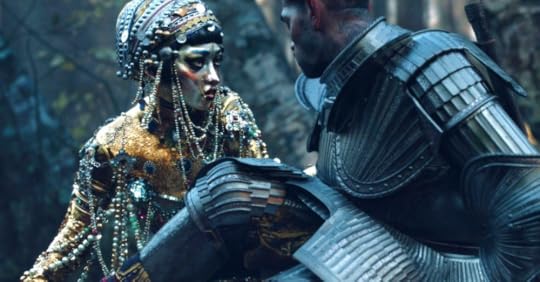
I had the reverse experience with Golgotha, where I greatly admired the sweating human facial animation during the first minute until I realized it was actually real. Golgotha has an Arthur Dent from Hitchhiker’s Guide to Galaxy vibe to it, with a bumbling priest chosen as the emissary to a first contact with an alien race of priests. He and the alien stroll along the beach talking about religion. The aliens themselves have a bit of a Star Trek IV: The Voyage Home setup. Overall I liked the change of seeing a live action piece. I wish there were a bit more meat to this one, as the alien conversation is over after just a few sentences, but it was enjoyable.
 The Screaming of the Tyrannosaur
The Screaming of the TyrannosaurThe Screaming of the Tyrannosaur screams of Love, Death, and Robots, with spectacular and gory action sequences. There’s also a bit of a Jupiter Ascending vibe to it.
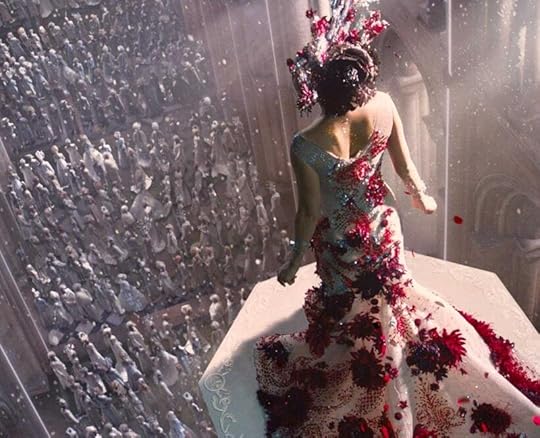
Jupiter Ascending, 2015
To celebrate a royal union, gladiatorial games unfold with humans and dinosaurs, but one of the gladiators has her own plans to bring down the royalty. This is one of those stories that you do disservice by simply describing it as “a bunch of body-painted naked people ride triceratops to battle each other and t-rexes” because it’s wildly inventive and visually kinetic, with a satisfying ending that feels like a short story you’d read in the yearly sci-fi anthologies.
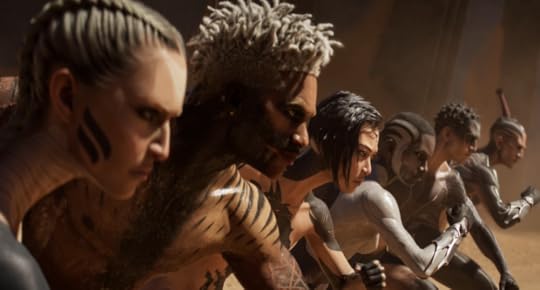 How Zeke Got His Religion
How Zeke Got His ReligionI’d mentioned how the anthology reminded me of Heavy Metal, but How Zeke Got His Religion is practically an episode from the 1981 movie, except where the 80s movie had zombies in a bomber, this has something else entirely. There’s a splash of Indiana Jones with WWII Nazis conjuring supernatural forces, but the episode is a solid and very gory hand-drawn horror. A WWII bomber, led by a mysterious occult expert, must bomb a church in the middle of the night before a horror is unleashed. When the horror is unleashed and gets inside the bomber, well, it’s horrible. The animation is beautiful and the directing flawless. It reminds me a bit of last season’s Kill Team Kill, another hand-drawn horror, in that as the monster catches up with each of the men you know that once it’s got a hold of one, the next moments will be terrible, and that just builds the anxiety as more men fall. Add in that it all takes place inside a bomber high in the nighttime sky and it’s truly the stuff of nightmares. I also admired that the supernatural monster was unlike anything you’ve seen before. At one point the men shoot it with a ship’s machine gun only to have the bullet holes rip open into dozens of mouths, like something out of The Thing. Highly recommended.
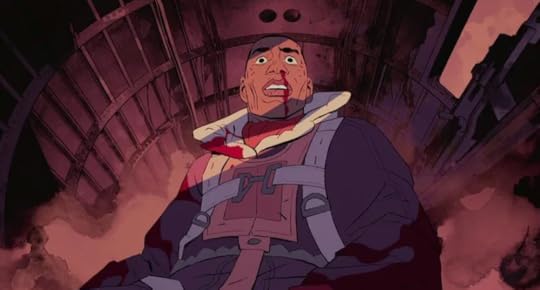
How Zeke Got His Religion, Season 4

Kill Team Kill, Season 3
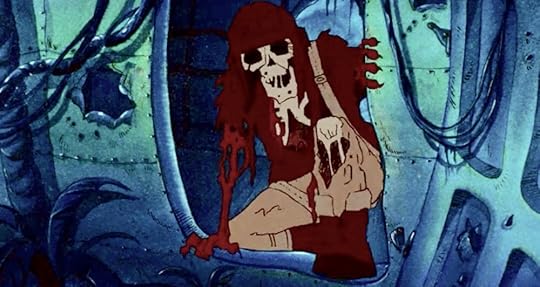
Heavy Metal, 1981
Smart Appliances, Stupid OwnersTold as a series of The Office style interviews with smart appliances, this episode is a fun commentary on human behavior, with each appliance offering a bit of snark. The animation style has a claymation look, a bit like Wallace and Grommet, which fits nicely with the tone. None of the jokes are laugh-out-loud funny, but several elicited chuckles. Cheeky and fun.
 For He Can Creep
For He Can CreepTold from the perspective of the cat, the story revolves around an imprisoned poet in a medieval asylum whose only friend is a cat. When the devil becomes interested in the poet and attempts to enlist the cat to realize his nefarious plans, the cat recruits his feline friends to thwart him. Wonderfully atmospheric, illustrated, and directed, For He Can Creep is a strong choice to end the season.

February 19, 2025
Mostly-Good Airports
As many know, I blame the hero of my stories, James Hayden, for exposing me to the bite of the aviation bug. In the Hayden’s World series, he’s an awesome pilot, and during my quest to learn what the assorted gauges and switches actually did on an airplane I downloaded a copy of X-Plane. You know, for research purposes. My research turned into a full-fledged hobby and I became part of the sim community, flying myself virtually out of my local field on literal flights of fantasy. Eventually I migrated to Microsoft Flight Simulator and was wowed to find the entire world modeled in my PC. Now, the thing is that after thousands of virtual flight hours all simmers develop the same fantasy. In it, a worried flight attendent steps in front of the closed curtains to the cockpit, asking if anyone onboard knows how to land a plane. You crack your knuckles. I’ve got this.
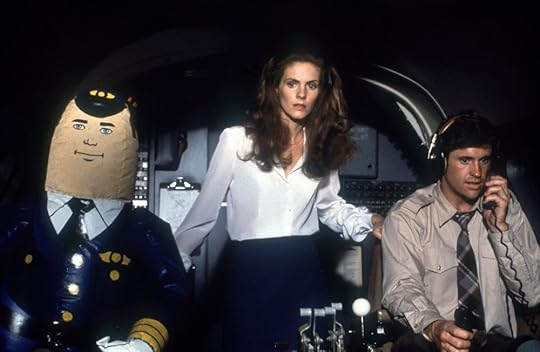
With that swagger, I booked a discovery flight at my local flight school and sauntered into the FBO. When the CFI asked “What do you want from today’s lesson?” and I replied. “I want to fly the plane as much as humanely possible,” I was bristling with confidence. This is where Morgan Freeman’s voice says, “He did not, in fact, have this.” Fast forward one hour where the CFI, who I’d lulled into a false sense of security from my amazing pre-knowledge, allowed me to actually attempt to land the plane. I cannot stress enough how different an experience it is from looking at a 2D monitor while landing munching Doritos with one hand versus hurtling face-down at eighty miles-per-hour towards an unflinching planet. Our aircraft was a non-stabilized mess careening towards an ever-enlarging patch of grass and I was thinking we’re going to die here but all I could utter was “Ground. Ground. Ground is coming up.” The CFI took the controls and bailed us out, wisely deciding it would be a few lessons before we would try that again. It turns out that landing a real plane is, in fact, really difficult. That didn’t dissuade me though. After countless crappy, bone-jarring landings, I eventually figured it out and through enough training and persistence convinced the FAA that it was somehow a good idea to give me a pilot’s license, so here we are.
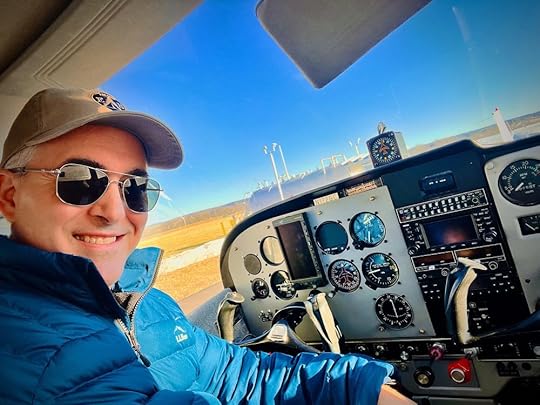
I still flight sim. Maybe even more than before I started real flying. There’s an expectations curve where you learn how the sim is different and in what ways it’s the same, and how to translate between the two. It’s interesting that there’s a bell-curve of opinions, ranging from die-hard simmers who get angry at the slightest implication that they couldn’t land a real 747 on the first try to real-life pilots who have never tried a sim and discount them as useless video games. The truth is in the middle. I had zero chance of landing a real plane on my first try, even with an F-18 pilot talking me through it (yes, really), but, I actively use Microsoft Flight Simulator as a supplement for real life flying. I’ll practice procedures in it and rehearse actual routes I intend to fly.
One of the nice things about virtual simming is that I can practice flying between my local fields whenever I want. The sim does a decent job of generating Lego versions of them, but I wanted more, so I learned how to work the Scenery Editor and create 3D models in Blender. To date, I’ve created KWBW Wyoming Valley and KSEG Penn Valley, which are both posted for free on Flightsim.to. This past week, I created KHZL Hazleton, but MSFS2024 is full of bugs and one of those bugs ate my airport. When you make an airport, you compile it in the editor and export it. Fortunately I have the compiled version, but the editor devoured the raw code. As such, it’s a mostly-good airport that I can’t further improve. Still, I enjoy flying out of it and like to share what I make, so here’s a link if you want to use it (unzip and copy to your Community folder). It only works for MSFS2024, and as I said, it’s as-is, but I think it’s not too bad:
KHZL Hazleton (Microsoft Flight Simulator 2024 version only)

There’s a few objects that required third-party libraries. The airport will still work without these. They just add a little flavor. To install these libraries, download and copy to your Community folder:
Ethnicfs Military Library (required for tank in front of FBO)]
EDHK Lights (night lighting)
I you haven’t seen my YouTube channel, please check it out and subscribe if simming is your passion. Thanks for coming along on this journey.
You can see the virtual flight from KHZL here:
Watch the real-life flight between KWBW and KHZL here;
January 6, 2024
Hayden's World: Volume 2 now available on Audible
I’ve collaborated once again with the very talented Shamaan Casey to produce the audiobook version of Hayden’s World: Volume 2. Find it on Amazon or Audible.

August 7, 2023
Hats off, with admiration
Last year I wrote a critical post about the first season of Star Trek: Strange New Worlds. My post was driven, in many ways, by a culmination of years of disappointment that started after Next Generation’s conclusion. I felt that modern Trek writers had lost their bearings, sacrificing the classic magic in favor of sensory overload. Star Trek: Discovery was the prime example, not trusting the viewer to stay engaged for more than three minutes without a new revelation or battle. When Strange New Worlds launched, I was hopeful about the return to the original series’ timeline. While the first season did rekindle the sense of exploration promised in its title, my complaint was that, like its contemporary peers, it was often afraid to let its episodes breathe and for its characters to stand on their own merits.
In hindsight, even Star Trek: The Next Generation needed two or three seasons to find its way. Simply ask yourself which NextGen S1 episodes you recall. There’s the pilot, “Encounter at Farpoint”, and “The Naked Now”, where the crew gets drunk on the same virus from the 60s series episode. What else? The other memorable episodes include the Binars stealing the Enterprise in “11001001”, Wesley getting sentenced to death for trampling flowers in “Justice”, Tasha Yar getting killed in “Skin of Evil”, and the Starfleet commander face-phasering of “Conspiracy”. Those aren’t necessarily good episodes, but you do remember them. The other two dozen episodes are a blur. Just two seasons later, however, the writers were dunking with stories like “Yesterday’s Enterprise” and “Best of Both Worlds”.

Encounter at Farpoint
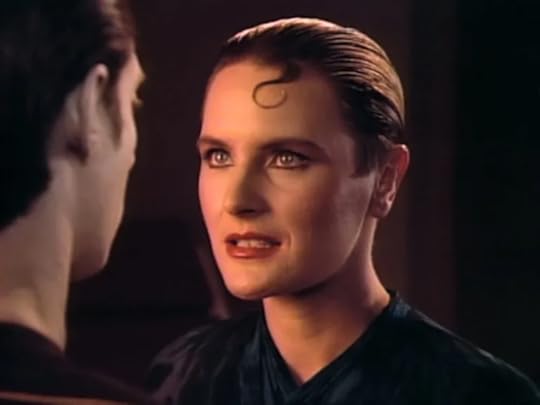
The Naked Now

Skin of Evil

Justice
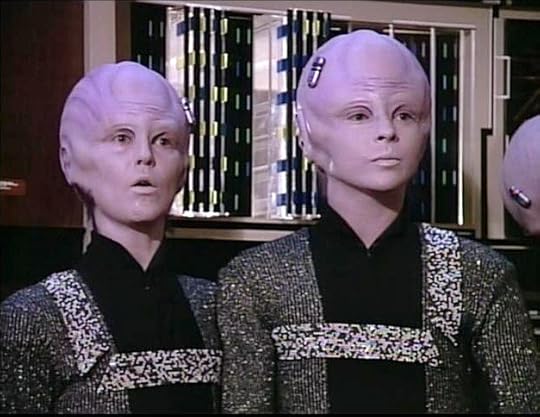
11001001
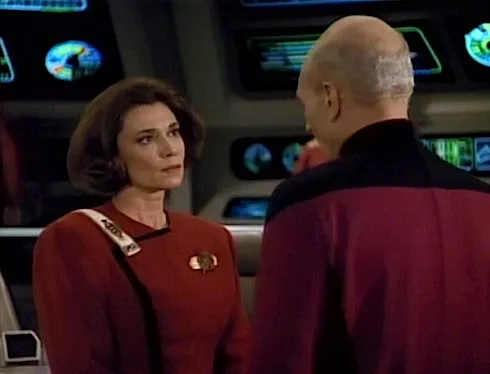
Yesterday’s Enterprise

The Best of Both Worlds
Season 2’s first episode of Star Trek: Strange New Worlds, simply titled “Episode One”, had a worrisome kickoff. When Pike is off the ship, Spock steals the Enterprise to help La’an. Along the way, Chapel and the doctor turn themselves into super-soldiers after injecting themselves with a mystery green goo. Right about here, as Chapel is single-handedly Matrix-fighting a squad of Klingons, is where I sighed and considered calling it quits for yet another modern Star Trek series. Can we just have a Star Trek series where not every crew member is a secret super-soldier with a dark twisted past?
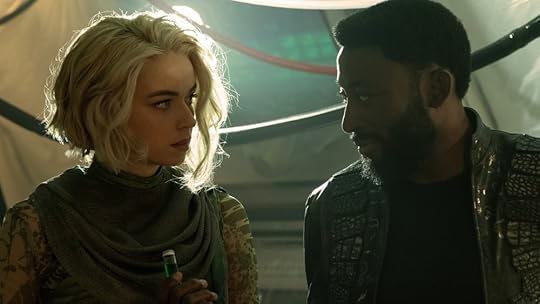
Fortunately, I stuck around. The second episode, “Ad Astra per Aspera”, is a classic court martial plot with Number One on trial for a fundamental right. It evokes ST:TNG’s “The Measure of Man”, where Data must prove his right to have free will. There are principled arguments to be made and the crew pulls together to support their besieged commander. Principles and camaraderie. It feels like Star Trek.

Ad Astra per Aspera
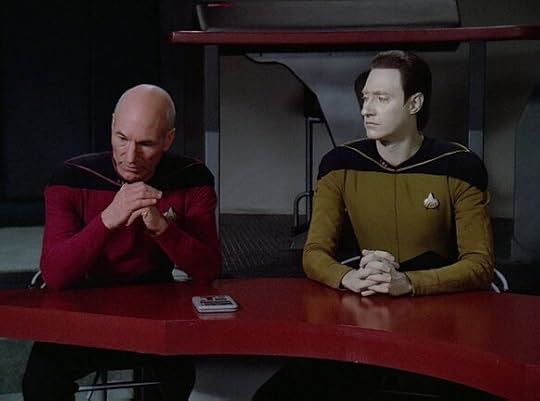
The Measure of a Man
Episode three, “Tomorrow and Tomorrow and Tomorrow” pairs an alternate timeline Captain Kirk with La’An in a time travel episode to the 21st century. It’s a restrained plot that explores La’An’s struggle with her family name while also giving her a chance for some romance. It plays a few Star Trek IV beats with Star Trek characters out of place in contemporary times, but overall it’s La’an’s story, and I appreciate that despite the writer’s perplexing S1 choice to make her related to Khan, she’s allowed to explore the stigma. I also like that her feelings for Kirk translate back into her home timeline, where Lieutenant Kirk has not had a relationship with her, setting her up for an Eternal Sunshine of the Spotless Mind situation where your lover no longer remembers you.
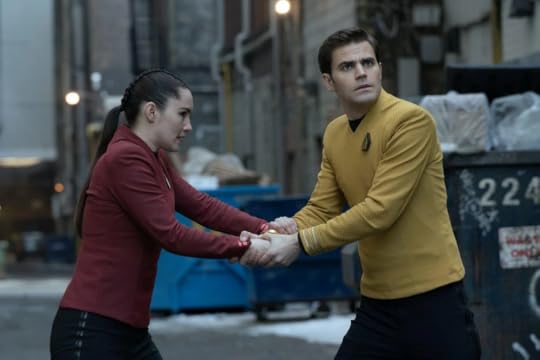
Episode four, “Among the Lotus Eaters”, is an away team mission where the planet slowly erases everyone’s memories. The villain is a rogue Starfleet officer who uses his superior technology to rule a primitive planet. It evokes classic TOS episodes such as “Patterns of Force” where a Starfleet captain models a planet after Nazi Germany for efficiency, and perhaps a little of “Court Martial”, where a crew member, Benjamin Finney, who Kirk believes is dead, extracts revenge upon Kirk for abandoning him.

Among the Lotus Eaters
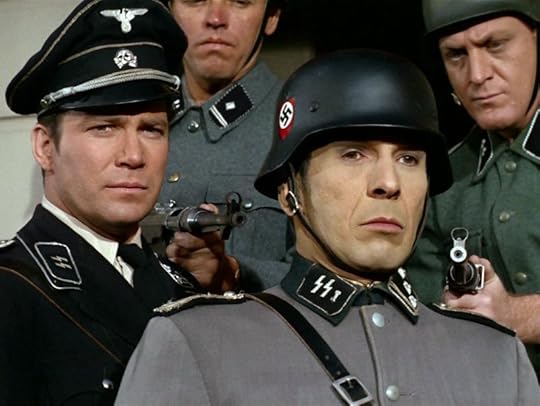
Patterns of Force

Court Martial
The next episode, “Charades”, is where season two hits its stride. When a shuttle accident seriously injures Spock, extra-dimensional aliens repair him using his DNA, mistakingly choosing the human component and making him entirely human. He awakens as a round-earred human, complete with uncontrolled emotions, at a critical time where he is to undergo a stern approval ceremony with T’Pring’s parents. This easily could have devolved into a Three’s Company episode, but instead it is delightful and laugh-out-loud funny. Spock’s one liners through the episode are comedic gold, such as “I believe my facial spasms are returning” as he struggles to keep a poker face under his mother-in-law’s demeaning onslaught. There’s a subtext that Chapel finds him easier to talk to about their relationship, since he’s not suppressing any emotions, but she also realizes he’s no longer himself. In a non-Star Trek reference, this reminds me of the Office episode where Dwight has a concussion, transforming into a normal human being for the episode before Pam somewhat reluctantly forces him to get medical help.
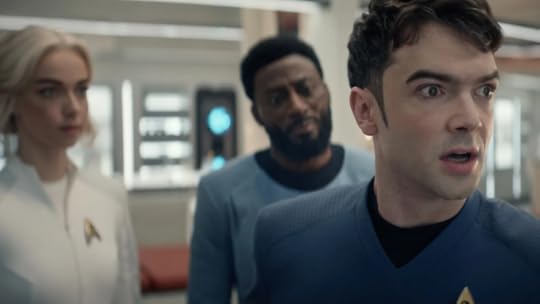
The idea of advanced aliens trying to fix a crew member but not having the correct blueprint evokes TOS’s “The Menagerie”, which tells the story of Christoper Pike being held by mind-manipulating aliens who also hold a human woman captive. The woman was the victim of a crash, who they tried to repair, but assembled poorly.
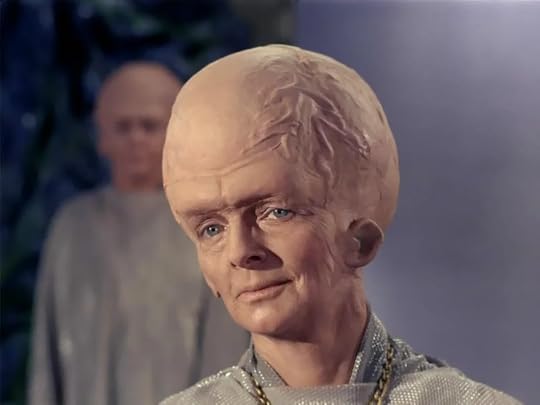
The Menagerie
I’d originally had some problems with Strange New World’s Spock relationship with Nurse Chapel, until I’d realized that Chapel admitted having secret feelings for Spock in the 60s series episode “The Naked Time”, where the crew becomes drunk on an alien virus, losing all inhibitions.

Uhura is the star of episode six, “Lost in Translation”, where only she can see terrifying messages from an alien race. It reminds me of ST:TNG’s “Night Terrors” where Counselor Troi keeps having nightmares that turn out to be a subconscious message from a trapped alien crew.

Lost in Translation
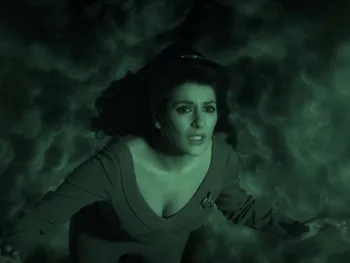
Night Terrors
I wasn’t originally sure how to feel about Strange New World’s version of Kirk, but in the original series whenever Kirk bumps into someone who knew him at the Academy or in his pre-captain days, he’s always described as a hard worker who was a “stack of books with legs”. I appreciate seeing a Lieutenant Kirk who is not yet Captain Kirk, but is an up-and-coming focused leader who will earn his future rank. It’s refreshing not to see the J.J. Abrams frat-boy version of post-Academy Kirk.
If season 2 had hit its stride a few episodes ago, episode seven is where it pulls way ahead of the pack. “Those Old Scientists” is a crossover episode with the animated Star Trek series, Lower Decks. It starts out animated in the Lower Decks timeline, with Ensign Boimler stepping into an alien portal that transports him back in time to Strange New Worlds’ setting. There, he is live-action, just like everyone else. As a time traveler, his presence is disruptive and the Enterprise crew wants to find a way to send him back to his home timeline. Matters complicate when a second Lower Decks crewmate, Mariner, emerges. It was so much fun, I watched this episode more than once. What makes this work so brilliantly is that Boimler is the ultimate Star Trek TOS fan, idolizing the characters and ships of the past. He is us, if we were transported to the Enterprise, and we live vicariously through him. Most importantly, this episode gives itself complete permission to be as Star Trek as possible while having unfettered fun. I loved every minute of it. It ends with an animated scene of Strange New World’s crew, explained as a weird side-effect or drinking too much Orion alcohol.
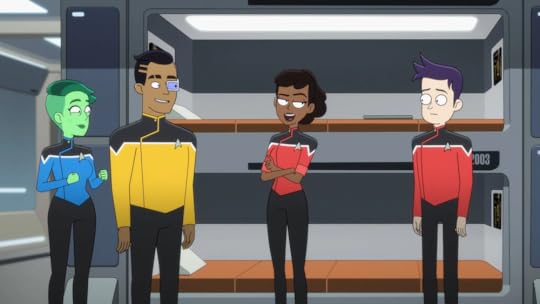
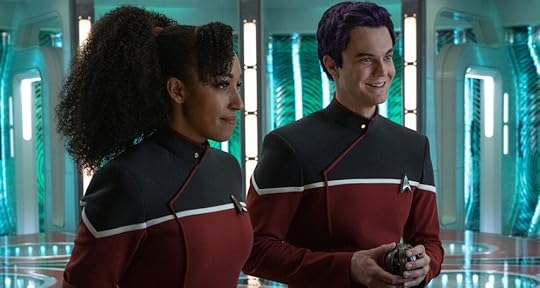

After the last episode, “Under the Cloak of War” will give you whiplash for its tonal shift. A dark, grueling episode about the trauma or war, with Chapel and M’Benga flashbacks as field medics treating an endless stream of casualties during a Federation-Klingon war. The plot cuts between the flashbacks and current time where a Klingon defector from that war now has a message of peace as an ambassador. Those who were brutalized by him, however, cannot forgive him. This reminds me of the TOS’s “The Conscience of a King” where the lead actor of a Shakespearean acting troupe is suspected of being Kodos the Executioner, a leader who killed thousands of people during a food shortage and is now trying to live a life of peace as an actor. The episode is about trauma and war, and makes a point that those looking in from the outside can’t understand its impact.
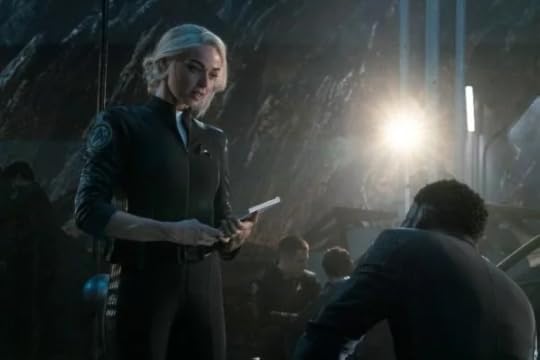
Under the Cloak of War

The Conscience of a King
This episode has a callback to Worf’s Klingon version of Tai Chi, Mok’bara:


Under the Cloak of War
The somewhat-reluctant dinner with old Klingon adversaries reminds me of the Star Trek 6: Undiscovered Country dinner:
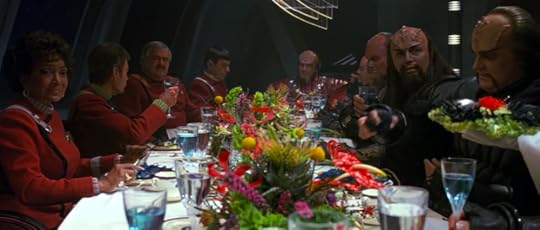
Star Trek VI: The Undiscovered Country
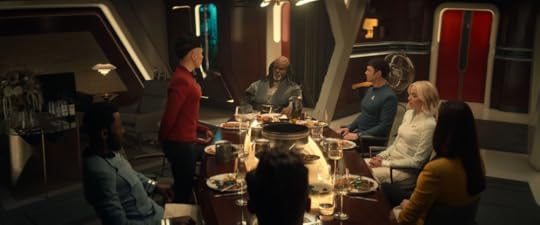
Under the Cloak of War
This leads us to episode nine, “Subspace Rhapsody”. Much like “Those Old Scientists” took risk with an animated/live-action crossover, “Subspace Rhapsody” pushes the chips all in for a musical episode. Let me say, this was the most fun I’ve had watching a Star Trek episode. When the Enterprise encounters a naturally-occurring subspace fold, an improbability field emerges, forcing the crew to break into song and dance whenever emotions are strong. The result is a theme-park of fun and character exploration, with characters revealing their inner-most feelings. Indeed - that is the conflict - characters share too much publicly, and the improbability field is growing, pulling other ships into its wake.
What I loved about this episode is that it was all about the characters. Spock’s “I’m the X” is as perfect a Spock song as it gets, with industrial, mechanical beats juxtaposed against Spock’s deeply-rooted emotions. Anyone who’s ever tried to think themselves through a breakup will relate.
Chapel’s “I’m Ready” is the same song recast as a glamorous cabernet-style tune, evoking her joy at breaking her bonds to pursue her dreams. Uhura searches for her place in the world, belting out the notes in “Keep Us Connected”. La’An explores the theme of unrequited love introduced in the time travel episode with “How Would That Feel?”. Although it doesn’t have a title, there’s a bring-down-the-house moment where even the Klingons get involved in the singing. The whole episode, complete with singing Klingons, could easily ruffle the feathers of any Star Trek purist, but, like the animated cross-over episode, it does just the opposite, serving up an homage of all things Star Trek.
So, to the writers of Star Trek: Strange New Worlds Season 2, I tip my hat, with great admiration. Keep doing what you’re doing. You’ve hit your stride and, like Usain Bolt smiling to the cameramen as he leaves the competition in the dust, you make it look easy. You’ve made me excited about Star Trek once again, and, like Kirk at the end of Star Trek II, I feel young, like when it was all new.

June 25, 2023
Thoughts on Black Mirror Season 6
Like your favorite sci-fi series, Black Mirror has evolved and matured since its fledgling Season 1 days. That first season debuted in 2011 and contained three episodes. What I recall about the early seasons is that the stories focused on technology’s dehumanizing impact on society and were often unbalanced. Where a traditional short story would have beats and a tidy wrap-up, Black Mirror’s narratives bounced off plot pegs like a Plinko chip, zig-zagging their way to an ending where all momentum abruptly stopped. I felt the writers had simply run out of time and typed “The End”. With Season 3, however, we were treated to more focused and fun narratives such as “Nosedive”, where everyone socially rates their interactions with others, causing a woman to have a true Trading Places experience when her rating plummets due to a series of ever-worsening events. Moving on to Season 4, we are rewarded with the gem of “U.S.S. Callister”, where a programmer creates a virtual Star Trek-like universe and imprisons sentient AI copies of his co-workers as the ship’s crew. We also get the memorable “Metalhead”, where a Terminator-like robotic dog relentlessly pursues the protagonists. Next, Season 5 starred Miley Cyrus in the fun “Rachel, Jack and Ashley Too”, where a teen’s Alexa-like toy robot is an AI copy of the pop star it is emulating, and the actual pop star needs rescuing. The progression of stories becomes more traditional, with popular actors guest-starring, runtimes approaching movie lengths, bigger budgets for sets and special effects, and solid writing.
Much like the Outer Limits had a theme of mankind’s hubris leading to its downfall, Black Mirror has nearly always been about the perils of technology (and in particular screens, hence the series name). What’s interesting revisiting Season 1 is the consistency of the underlying message. Both Season 1 and 6 contain an indictment of the consumer as being complicit in whatever unethical thing the content provider is creating. In Season 1, it’s “Fifteen Million Merits”, where people earn merits by riding stationary bikes while watching a roomful of screens. Merits buy or skip content, and the characters in the episode end up becoming the content they were consuming, which itself is a type of jail. Compare that to the latest Season 6, where three of the five episodes are indeed mirrors for the viewer, showing his complicity (and in one episode making the content viewer the content).
The Season 6 episodes, in order:
JOAN IS AWFUL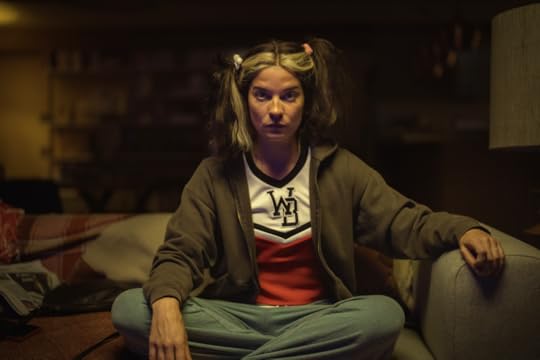
A woman comes home to watch a new trending series on Streamberry (a fictional version of Netflix, in a nice bit of meta) only to discover that the series is all about her and that she is the villain everyone loves to hate. It’s quite a brilliant piece of writing that lands on multiple fronts. It takes series like “The Tiger King”, where a real person’s life is served up as entertainment to the masses, and flips it on the consumer, inviting them to see how they would feel if their life were served up as entertainment for others. It also shines the light on Netflix’s content creation machine, AI content creation, deep fakes, personal control over one’s image and likeness, and even a Matrix-like examination of what is real. Thoroughly enjoyable, and, well, awful.
LOCH HENRY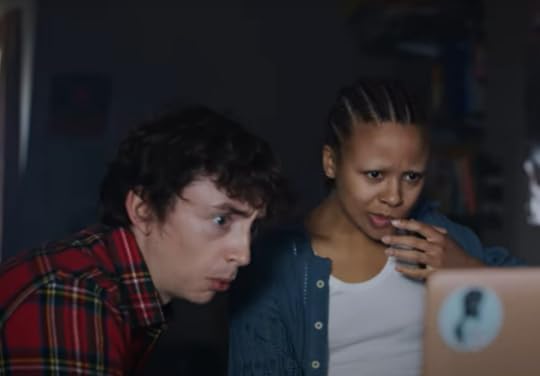
A film student and his girlfriend return to his home town to visit his mother. While there, he decides to make a documentary about a local serial killer who was responsible for the death of the film student’s policeman father. The technological aspect of the story revolves around an old stack of VHS tapes. I can’t say much more without divulging the plot. Similar to “Joan is Awful”, the story focuses on the intrusiveness of creating content based upon real-life tragedies, and asks the viewer to consider how he would feel if that content included him. Loch Henry was the weakest of the five episodes. Although there was some nice cinematography and terrific acting, I found my attention drifting, even after the big reveal.
BEYOND THE SEA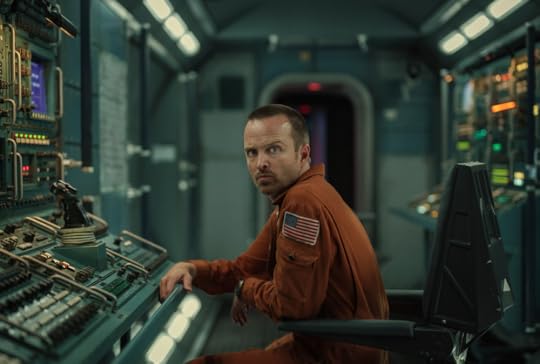
Breaking Bad’s Aaron Paul, 40 Days and 40 Nights Josh Hartnett, and House of Cards Kate Mara round out an all-star cast in this sci-fi flick set in an alternate 1969 where two astronauts are on a six-year manned space mission. To keep sane, they both have Avatar-like android replicas back on Earth that they can jack into, allowing them to spend time with their families. When one of the astronaut’s family is murdered and his avatar destroyed, he sinks into a deep depression. The other astronaut allows him to use his avatar as a form of therapy, but this involves inhabiting the body and family life of another man. This episode is slow, cerebral sci-fi with a small cast and just a few set pieces. One has an idea that all is not going to end well. It’s a bit like a reverse-Avatar, where instead of controlling an avatar to interact with Pandora’s aliens, you are interacting with humans back on Earth. One of the things I admired about the writing is that there was no attempt to explain the technology. The characters simply accept it, and so does the viewer. There’s also a subtext of 60s-era masculinity driving the problems, where neither man can talk about his emotions and both view women as possessions.
MAZEY DAY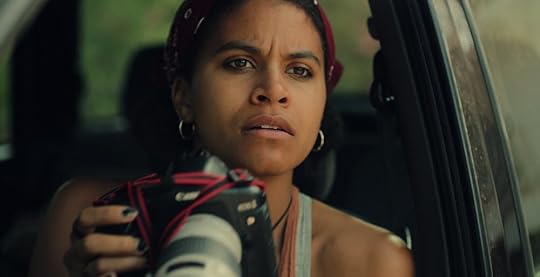
A financially-strapped photographer has a crisis-of-conscience and quits her paparazzi job, only to take one last lucrative assignment to snap photos of a starlet-in-hiding named Mazey Day. The episode starts as a somewhat-standard the paparazzi are awful plot, showing the horde of photographers going through every devious trick to score their prize and, in general, acting like terrible people. In that way, it’s very much on theme with the other episodes’ indictment of content consumers. After all, they are getting rewarded by the consumer for their intrusiveness. About two-thirds of the way through the story the plot takes a very unexpected and delightfully bloody twist with the remainder of the episode transforming into a rollercoaster of horror. The twist itself is nothing new from a cinema standpoint, but it is nonetheless fun, and I watched it twice.
DEMON 79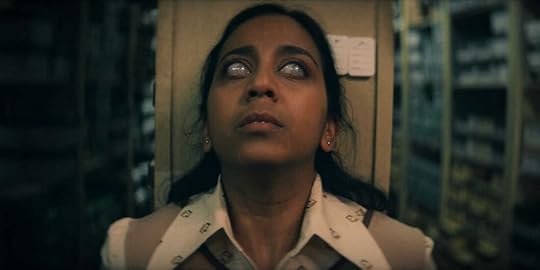
The standout episode from the season is also the least Black Mirror-ish. In fact, instead of the shattered Black Mirror title logo, Demon 79, opens with a Red Mirror logo. Set in 1979 and shot beautifully in a film style that emulates 70s-era slasher films, the sets, costumes, background television clips, and color palettes are aglow in Kodachrome hues. The plot follows a mild-mannered department store worker who faces racial discrimination, retreating into dark fantasies, Ally McBeal-style, where she strangles her co-workers. When she is exiled to eat her lunch in the department store basement, she accidentally summons a demon after bleeding upon a strange talisman she finds in an old desk. The demon tells her she must kill three people in three days to prevent the end of the world. To help her, the demon (hilariously) assumes the form of the lead singer of Boney M based upon a television show the woman had recently watched, and offers to show her the sins of her potential victims to ease her own moral qualms. There is no real technology component to this episode. Instead, it is a solid horror-comedy short with a traditional story structure, great momentum, and wonderful 70s homage. It’s its own mini Breaking Bad, following the woman’s transformation from victim to predator. Worth a second watch.
All five episodes this season were excellent, and the order they were presented makes perfect sense, with the strongest two (Joan is Awful and Demon 79) at both ends, and the middle-of-the-pack (Beyond the Sea) in the middle. It’s high praise that I went back and watched both Mazey Day and Demon 79 again. It’s awesome that Black Mirror has been churning out content now for twelve years, and I hope to see a Season 7.
April 5, 2023
Real Flap Failure during my Flight Lesson
As a student pilot, one of the things you practice a lot is how to react to unusual situations. This ranges from emergencies (your engine stops working and you’re miles from the airport) to inconvenient (your radio shuts down). One of those situations I’ve practiced a few times usually occurs when I’m set up to land and reach for the flap lever, lowering the flaps to slow the airplane. My instructor would typically say, “What if you pushed the lever down, and nothing happened?” The answer, after some brief troubleshooting, is always to configure for a no flap landing, which is faster, floatier, and uses more runway than a normal landing. It’s always been a hypothetical. That is, until last week.
After seven laps around the pattern, the first hint that something was awry occurred when the plane took off on its own. It only took a second for us to determine the flaps were full down. At the time, I thought it was an error on my part, that I’d bumped the switch during the brief rollout on the runway between touch down and takeoff. We put the flaps back up and everything seemed fine. As we circled around the pattern and got ready for an another landing, I flicked down the flaps switch. Nothing. After a few seconds of toggling the switch and jiggling its connections, my instructor and I quickly realized we had no flaps, and immediately switched into no flap landing mode. We had a direct crosswind and had been practicing crosswind landings, so the combination of no-flap/crosswind landing made it more challenging. See how it went here:
March 13, 2023
Hayden's World: Volume 1 - Now on Audible!
It’s here! Shamaan Casey is the voice of the Hayden’s World series, and I’ve partnered with him to produce the full version of Hayden’s World: Volume 1. Hear the stress in James’s voice as he pushes Bernard’s to near lightspeed and the desperation of Jia and Ping as they crash through Titan’s murk, all brought alive via Shamaan’s expert narration. You can find HW:V1 here on Audible.
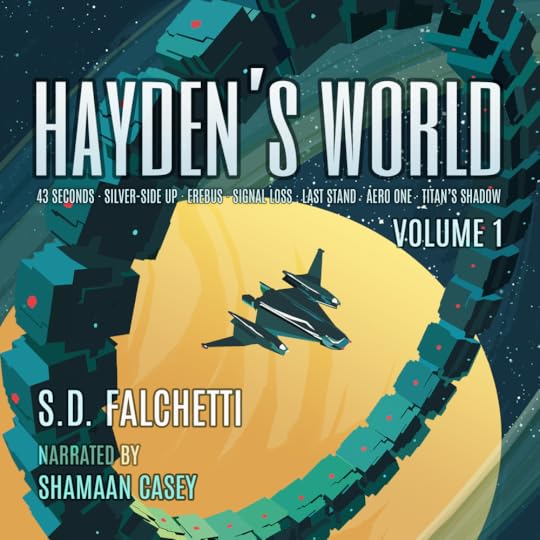
March 6, 2023
Fly along with me
I had cameras running during my latest flight lesson, practicing soft and short field landings on a beautiful winter morning. Fly along with me in this YouTube video:
January 3, 2023
Reality versus Simulation
Just how much does Microsoft Flight Simulator 2020 look like the real thing? I got a chance to find out last week, when I piloted a real Cessna 172 Skyhawk into a landing at KRDG Reading and then, the next day, repeated the same flight in Microsoft Flight Simulator 2020. Curious, I set the in-flight video side-by-side with the MSFS 2020 video. The result:
I have to say, my jaw dropped a bit at home closely the two matched up, right down to the touchdown point. That’s not to say that MSFS 2020 is just like flying the real thing - I actually wrote a Quora answer to the question of whether someone with flight sim experience could land a real airplane on the first try (what do you think? I found out that answer for real in April 2022) - but wow…it’s much closer than I guessed. You can watch the MSFS 2020 recreation of the entire 158 mile flight (thankfully condensed to 17 minutes) here:
May 21, 2022
Thoughts on Love, Death and Robots Season 3
Each year, I eagerly awaited the release of Neil Clarke’s The Best Science Fiction of the Year. It was a cornucopia of sci-fi short stories that, hopefully, reflected the best of what was out there and the paperback accompanied me to bed. It was easy to knock out a story a night before falling asleep.
Very few movies have attempted the anthology format. The 80s flicks Heavy Metal, Creepshow, and Cat’s Eye come to mind. Now, however, in the age of streaming entertainment, the anthology format marries up well with on-demand bingable content. Like my Neil Clarke book, I could knock off a story each night before going to bed.
Netflix’s Season 1 of Love, Death, and Robots was eighteen short episodes featuring love, death and/or robots. Many of the short stories were recognizable, previously published by well-known sci-fi authors. Season 1 was, however, excessive in its nudity and gore, and it seemed the point of some episodes was simply to titilate. Season 2 dialed it down to eight longer character-driven stories. Indeed, one episode of Season 2 was simply about a scientist observing how townspeople reacted to a dead giant man who washed up on their beach (and it was strong episode, not relying on machine guns or explosions to keep the viewer’s attention). So, when Netflix announced Season 3’s release, the million dollar question was: what format would they follow?
Fortunately, Netflix paid attention to their Season 2 reviews and followed suit with Season 3, releasing nine episodes on May 20, 2022. Similar to Season 2, there is almost no nudity, although they did dial the gore setting up several ticks. Nearly every episode has graphic violence, and I will admit that I became a bit numb to it by the end of my binge-fest. Like previous seasons, there are a variety of visual styles ranging from hand-drawn cel-shaded traditional animation to photorealistic CGI real enough that you’ll wonder if they subbed in live-action actors. You will immediately recognize several of the shorts as classic sci-fi stories by names such as Asher, Swanwick and Scalzi. There are no bad episodes (although there is one episode that isn’t my cup-of-tea, but that doesn’t make it bad), and all of them are memorable in their own way. Similar to Season 2, I have no best/worst list because the quality of all of them is excellent; instead, I’ll give my thoughts on each.
Three Robots: Exit Strategies
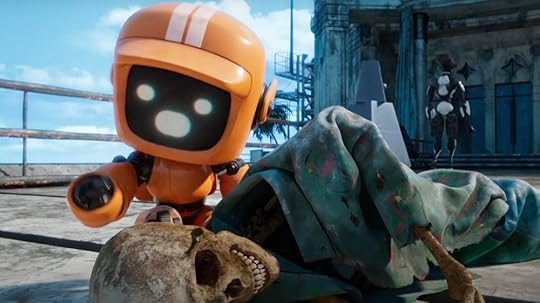
There is always a Scalzi story in Love, Death and Robots. This one is a sequel to the Season 1 episode featuring three robots touring a post-humanity wasteland. It’s classic Scalzi humor: a bit political, snarky, and dry. I was ambivalent about the Season 1 version of this episode, and Season 3 felt like more of the same, so for me I was tempted to skip to more interesting episodes about half-way through this one. Not bad, but I personally have never found the three robots very funny.
Bad Travelling
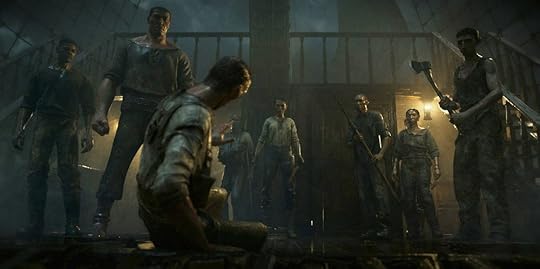
Based upon a Neil Asher story, this a fantasy flick set nearly entirely upon a sailing vessel. When a sea monster occupies the ship’s lower decks and demands human meat, the crew faces some bloody and savage decisions about how to proceed. Everything happens by torchlit-night and the vibe is gothic horror. A morality play drenched in blood.
The Very Pulse of the Machine

There always is a breathtakingly-cel-shaded episode in Love, Death, and Robots, and The Very Pulse of the Machine is gorgeous, set on Jupiter’s moon Io. After a rover wreck kills her companion, a woman must drag her companion’s body kilometers across Io’s landscape to rendezvous with a shuttle. When she starts hearing the slain woman’s voice, she’s unsure if it’s drug-induced hallucinations or something else. Surreal and trippy, this episode is a winner worth watching more than once.
Night of the Mini Dead
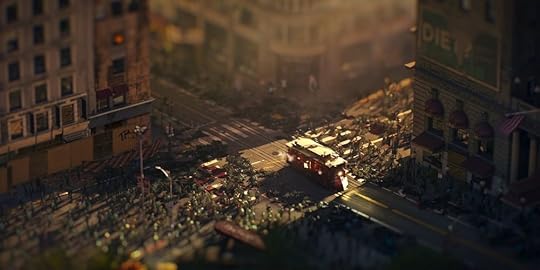
If you’ve ever played a 4X computer strategy game, you’ll recognize the bird’s eye view as you watch hordes of tiny soldiers class with enemies. Night of the Mini Dead is just that: the zombie apocalypse on fast-forward shot with a tilt-lens effect as if you were looking down on a diorama. It’s fun and zippy, a little snarky, and something that will leave you with a smirk on your face.
Kill Team Kill

Based upon a story by Justin Coates, this episode is hand-animated in a style and tone reminiscent of Heavy Metal. The opening of the episode features a man urinating directly on the camera’s view, the man relishing in what he’s doing, complete with visible cartoon-drawn genitals. That’s pretty much the tone of the entire episode. The story is about a special ops unit that encounters a “honey badger” - a cybernetic grizzly bear killing machine. It reminds me a bit of the grizzly bear scene in Annihilation, if the grizzly bear were a T1000. The violence and gore is dialed up to eleven, and the F-word is used like breathing. It’s intended to be so overly-macho that it slips into parody, spewing out lines like, “Sarge, can we have permission to die now?” On the plus side, though, I was impressed by the directing of the action. It’s difficult to portray chaotic action clearly in a way that the viewer knows exactly where everyone is and what is happening, but Kill Team Bill does a great job at this. When a character scampers back on all fours, dodging snapping jaws and claws, it has a realistic chess-like logic to it with the viewer anticipating when he’ll run out of moves. The ending credits song features a death-metal verse “F-you, honey badger” shouted over and over, which, one again, emphasizes unapologetically that this episode is just what it is.
Swarm
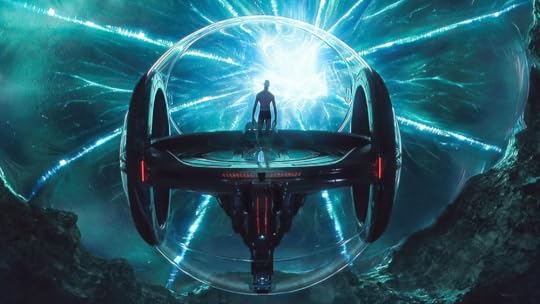
Based on a story by Bruce Sterling, Swarm is classic sci-fi with weird aliens, future humans, and humanity’s tendency to exploit others. There’s a slight shade of Avatar with a woman who has been studying an alien swarm that lives inside an asteroid and a man who arrives to try and exploit them. The story is interesting for both its visual beauty and its tonal shifts. It starts out magical and wondrous as they two humans swim through the alien environment, discovering its amazing workings. It shifts to a brief romance, providing one of the fleeting nudity scenes in Season 3, before plummeting into a dark abyss of horror. It reminds me of an Outer Limits episode, where mankind’s arrogance always leads to its downfall. It’s worth watching more than once (although the ending horror scene is the stuff of nightmares).
Mason’s Rats

I’d read this story before by Neal Asher. A farmer with a rat problem notices his issues have escalated when the rats evolve to use crossbows and weapons. When he turns to a technological pest-control solution of mechanized rat killing machines, an all-out war breaks out in his barn. The result is The Secret of NiMH meets Saving Private Ryan, and the graphic violence is of the rat variety but is still nonetheless bloody and gory. It’s an excellent episode with a satisfying ending.
In Vaulted Halls Entombed
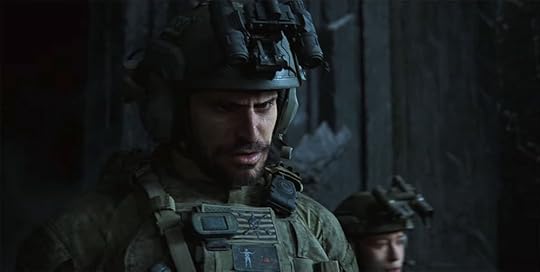
I’d describe this military story by Alan Baxter as Seal Team Six meets Call of Cthulu. When a military unit is tasked with rescuing a hostage from insurgents in Afghanistan’s caves, they find a brutal and otherworldly horror. Where Kill Team Kill was an over-the-top Kill Bill approach to marines versus monsters, In Vaulted Halls Entombed is a serious take. I appreciated that the military team moved and talked like a military team, and the photorealism of the the CGI was superb. The violence is very Starship Troopers: graphic, bloody, and dismembering, and the story’s resolution was unsettling.
Jibaro
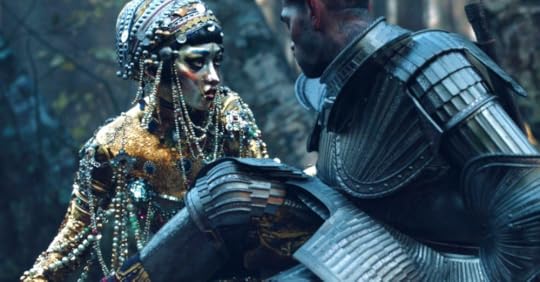
Last year, Netflix stuck the landing on Season 2 by ending with the Drowned Giant. This year they chose well once again, concluding with Alberto Mielgo’s Jibaro. A fantasy piece, the story features knights in plate mail catastrophically encountering a bejeweled siren in the river. The main character, Jibaro, is deaf and consequently immune to the siren’s power, but he is also greedy, coveting the siren’s jewels. The photorealism of this story is simply unbelievable and had me questioning whether live-action actors had been subbed in. Even the best CGI often has characters with lifeless eyes or skin that doesn’t quite reflect all of the subtle muscle movements of the human body. The siren in Jibaro, though, has eyes that look completely real, filled with intelligence and emotion. I recognized the frantic style of the director immediately, as he had done Season 1’s The Witness.
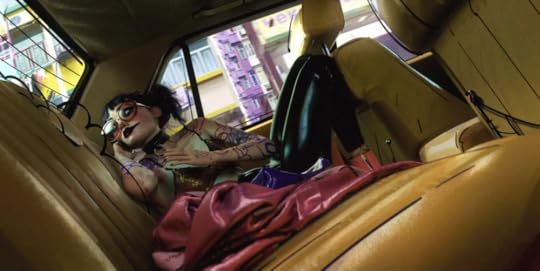
Season 1’s The Witness
The Witness was a gratuitous nudity romp where a mostly-naked woman runs through the entire story pursued by another man. It was one of my least favorite Season 1 episodes. Jibaro, even though it also is a bit of a pursuit story, reels it in. There is no nudity, although there is a fair amount of violence. What’s interesting is that there is no spoken dialogue. The story conveys everything through the actions and expressions of its characters. The directing is manic and jarring, but when it settles down it is quite impactful. Memorable (in a good way) is the way I’d describe Jibaro. It’s on my “watch again” list.
So that’s it! Season 3 is solid and easily bingable in one setting. It’s a mark of quality that I intended to watch a few of the episodes a second time. Well done, Netflix.



